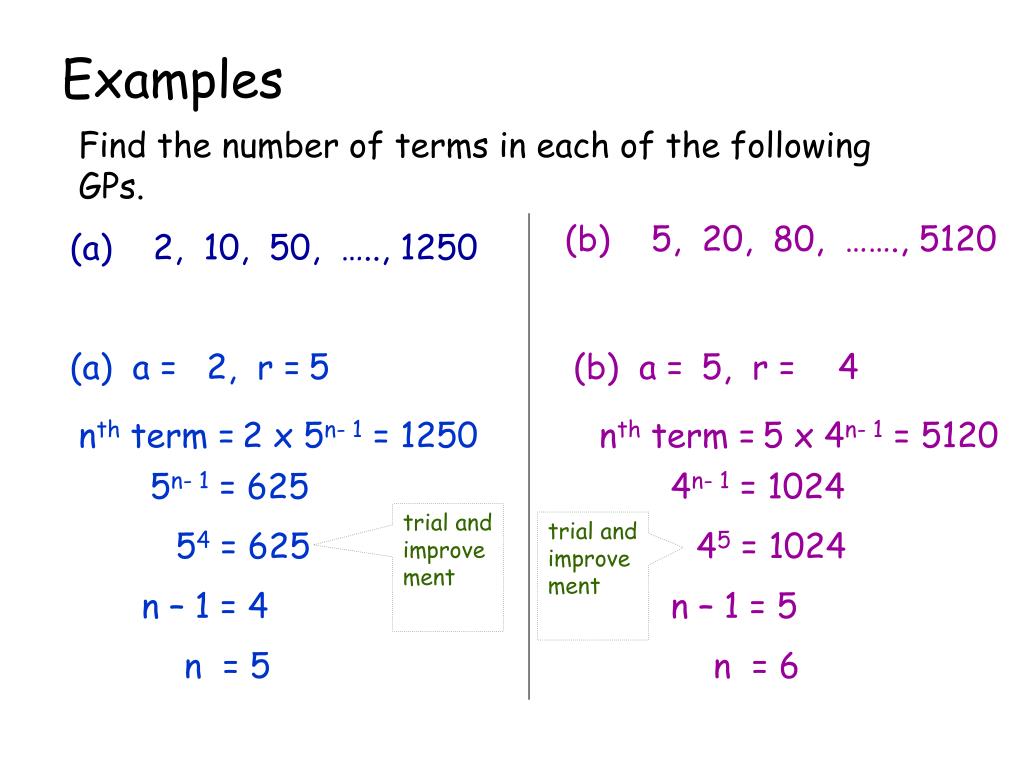

is a geometric progression with common ratio 3. In mathematics, a geometric progression, also known as a geometric sequence, is a sequence of non-zero numbers where each term after the first is found by multiplying the previous one by a fixed, non-zero number called the common ratio. The first block is a unit block and the dashed line represents the infinite sum of the sequence, a number that it will forever approach but never touch: 2, 3/2, and 4/3 respectively. We can use the Geometric Distribution Calculator with p = 0.10 and x = 5 to find that the probability that the company lasts 5 weeks or longer without a failure is 0.59049.Diagram illustrating three basic geometric sequences of the pattern 1( r n−1) up to 6 iterations deep. Suppose the CEO of the company would like to know the probability that the company can go 5 weeks or longer without experiencing a network failure. Suppose it’s known that the probability that a a certain company experiences a network failure in a given week is 10%. We can use the Geometric Distribution Calculator with p = 0.04 and x = 10 to find that the probability that he meets with less than 10 people before encountering someone who is failing for bankruptcy is 0.33517. Suppose a banker wants to know the probability that he will meet with less than 10 people before encountering someone who is filing for bankruptcy. Suppose it’s known that 4% of individuals who visit a certain bank are visiting to file bankruptcy. before an inspector comes across a defective widget: We can use the following formulas to determine the probability of inspecting 0, 1, 2 widgets, etc. Suppose it’s known that 5% of all widgets on an assembly line are defective. before the researcher speaks with someone who supports the law:

We can use the following formulas to determine the probability of interviewing 0, 1, 2 people, etc. The probability that a given person supports the law is p = 0.2. Suppose a researcher is waiting outside of a library to ask people if they support a certain law. Note: The coin can experience 0 “failures” if it lands on heads on the first flip. We can use the following formulas to determine the probability of experiencing 0, 1, 2, 3 failures, etc. Suppose we want to know how many times we’ll have to flip a fair coin until it lands on heads. In this article we share 5 examples of how the Geometric distribution is used in the real world.
#Geometric sequence examples trial
p: probability of success on each trial.k: number of failures before first success.If a random variable X follows a geometric distribution, then the probability of experiencing k failures before experiencing the first success can be found by the following formula: The coin can only land on two sides (we could call heads a “success” and tails a “failure”) and the probability of success on each flip is 0.5, assuming the coin is fair.
#Geometric sequence examples series
The Geometric distribution is a probability distribution that is used to model the probability of experiencing a certain amount of failures before experiencing the first success in a series of Bernoulli trials.Ī Bernoulli trial is an experiment with only two possible outcomes – “success” or “failure” – and the probability of success is the same each time the experiment is conducted.Īn example of a Bernoulli trial is a coin flip.


 0 kommentar(er)
0 kommentar(er)
